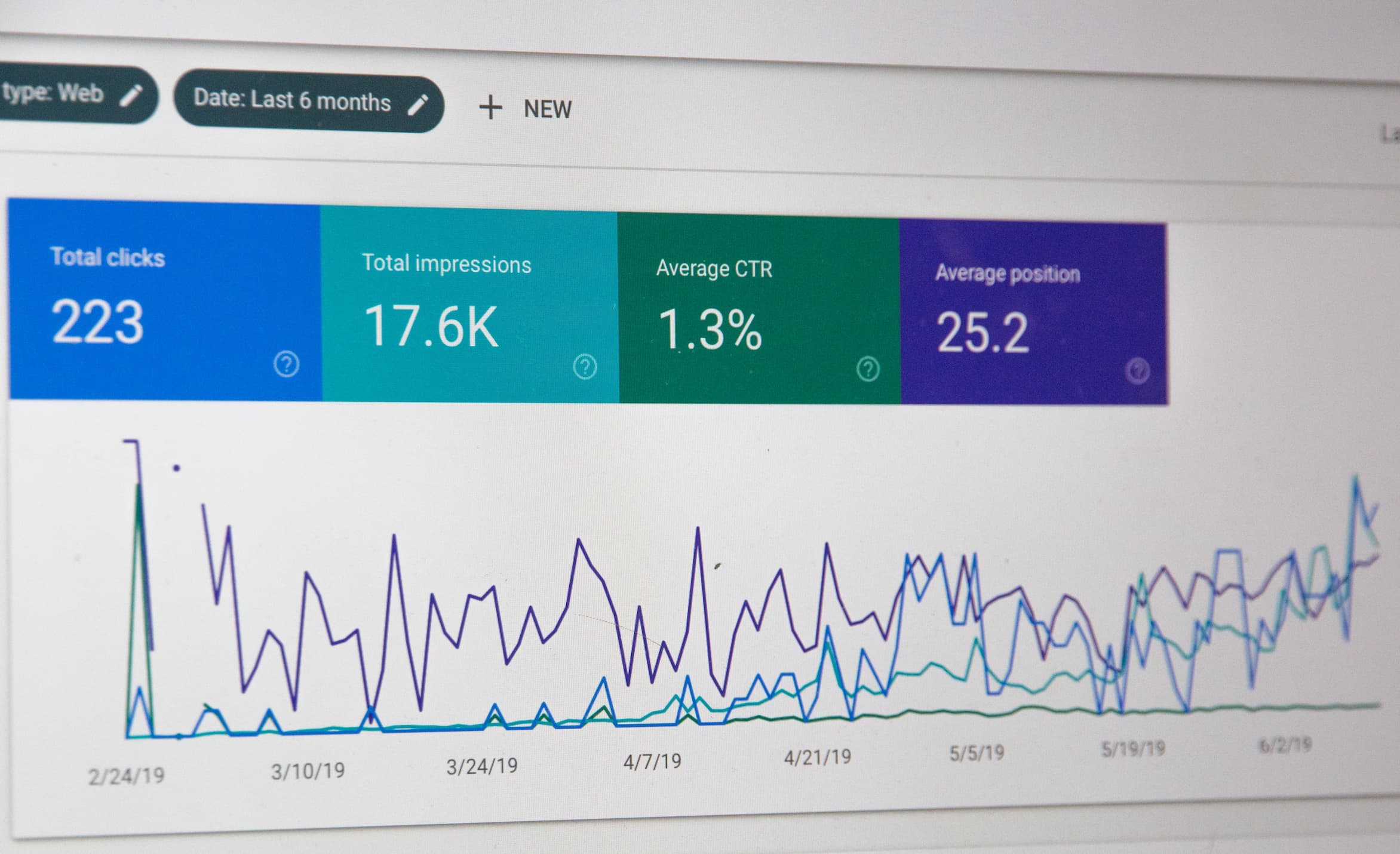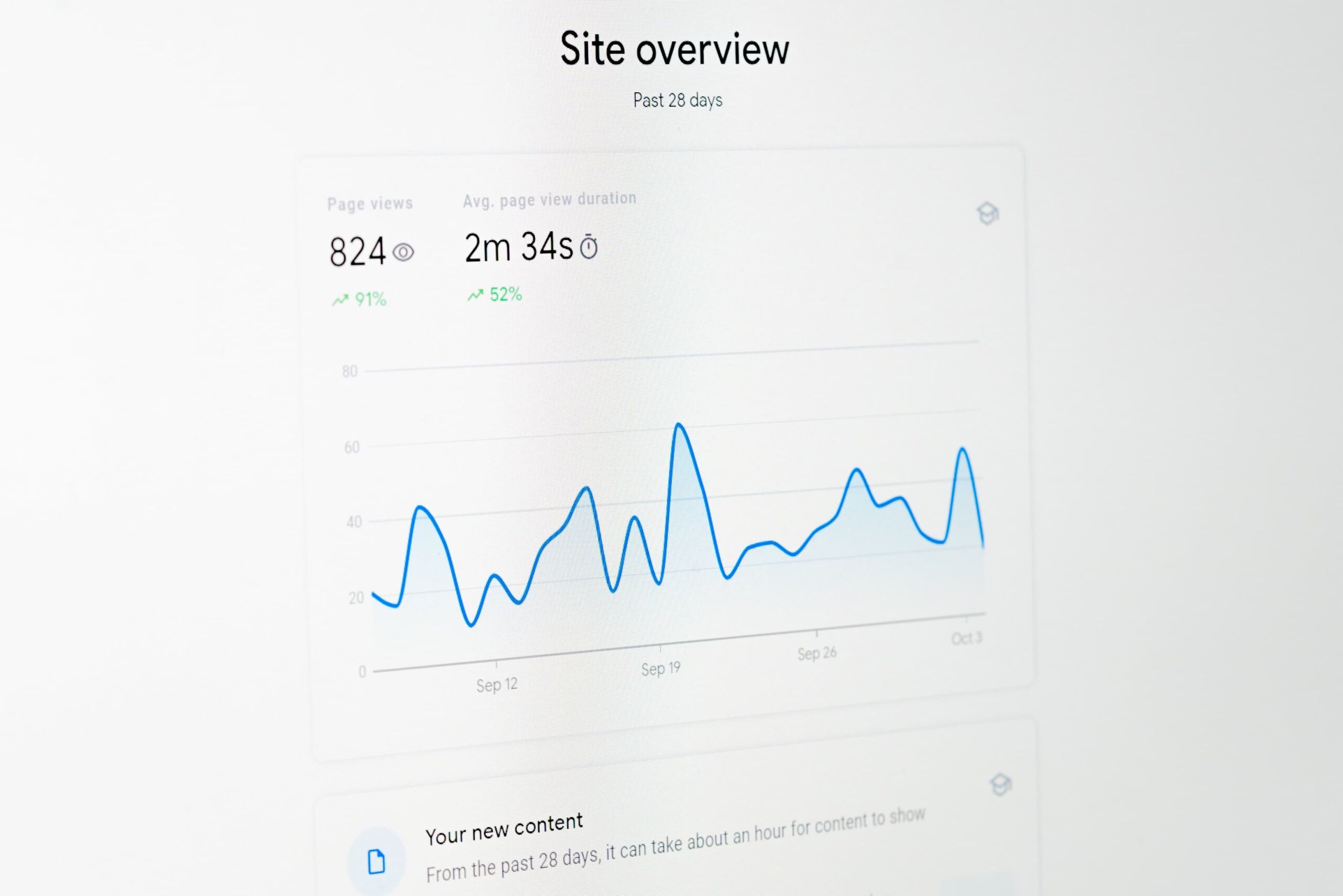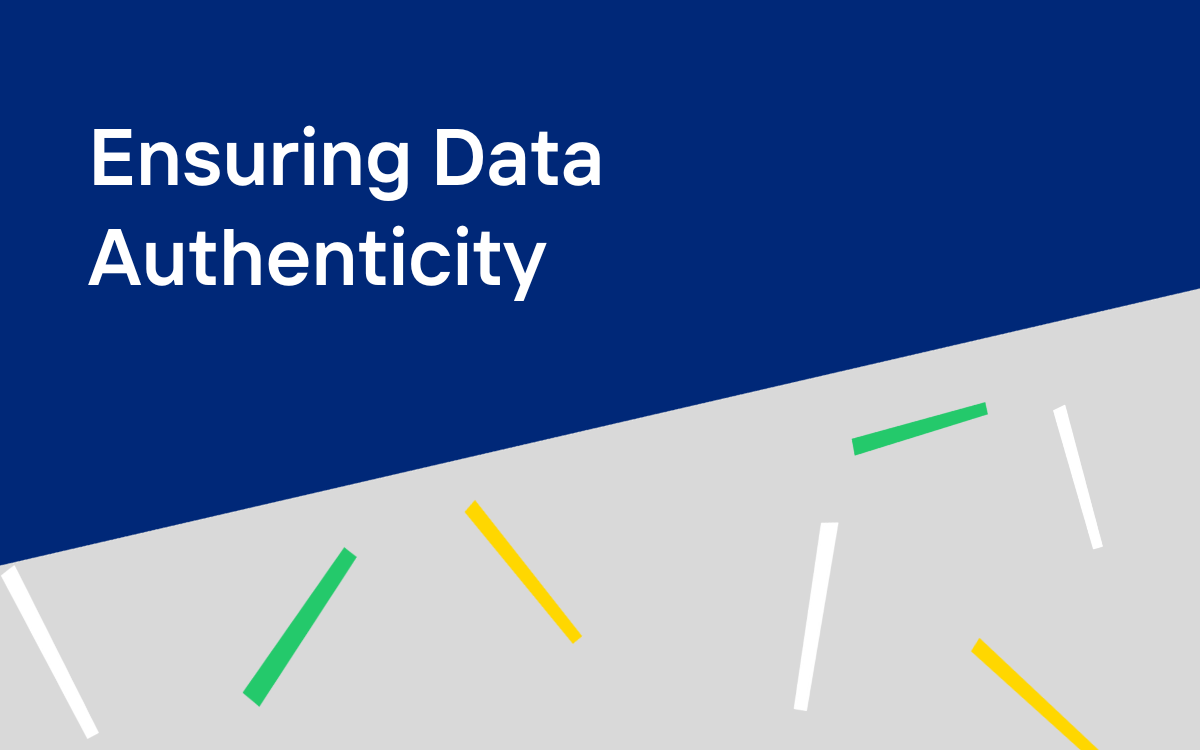Have you ever wondered how accurate your website analytics data is? In a world where bots are increasingly prevalent, skewed analytics can lead to faulty insights and misguided business decisions. Let’s dive into the world of skewed analytics and explore the challenges posed by malicious bots. We’ll also discuss strategies for identifying and managing bot traffic, and even take a closer look at some real-life case studies of businesses affected by skewed analytics.
Key Takeaways
- Understanding and avoiding skewed analytics requires identification of sources such as bot traffic, user behavior analysis, and implementation of bot management solutions.
- Businesses should be aware of malicious bots that can cause security risks and inaccurate data.
- Regular monitoring is necessary for businesses to identify issues and ensure accurate data for sound decision making through collaboration with modern bot management companies like Kasada.
Understanding Skewed Analytics

In today’s digital landscape, bots are becoming more sophisticated and prevalent. It is estimated that bot traffic accounts for approximately half of all internet traffic, which can result in skewed data. Bots are capable of executing simple tasks repeatedly with a much greater speed than humans can, which can sometimes lead to negatively skewed analytics. With businesses increasingly relying on accurate data to inform their decisions, combating skewed analytics has become a crucial concern.
Bot management leverages a variety of techniques to accurately identify bots and prevent malicious activity while permitting legitimate bots to continue functioning without interruption. Working with a bot management provider the deploys strategies such as dynamic detection, client validation, highly obfuscated defenses, and constant protection improvements can all help businesses detect and stop malicious automation, reducing the negative skew in their analytics data and facilitate better decision-making. In this context, learning how to manage bots is essential for the success of bot management work, which plays a crucial role in maintaining the integrity of a company’s online presence.
Defining Skewed Analytics
Skewed analytics refers to data that is not accurate due to factors such as bot traffic or an uneven distribution of data, which can lead to a positive skew in some cases. This distortion can result in inaccurate insights and potentially erroneous business decisions, especially when data is positively skewed. In order to make well-informed decisions, it is essential for businesses to be aware of the presence and impact of skewed analytics on their data.
Managing skewed analytics requires identification and control of data skewness sources, including bot traffic and uneven data distribution. Bot management solutions can help businesses mitigate skewed analytics impact and maintain data accuracy and reliability.
Causes of Skewed Analytics
There are numerous factors that can contribute to skewed analytics, such as bot traffic, click fraud, and other automated activities that disrupt the accuracy of genuine user data. Excessive bot traffic on websites and applications can skew visitor metrics, making it difficult to achieve a normal distribution of data. Inequality in data distribution and homogeneous groups can also lead to skewed analytics, which can impact the accuracy of insights derived from tools like Google Analytics. Addressing these factors is crucial in order to maintain accurate and reliable analytics data.
The Impact of Malicious Bots on Analytics

Malicious bots can have a detrimental effect on analytics data, such as inflating engagement metrics, compromising security, and negatively impacting website performance. These bad bots are automated software programs that are created with the purpose of performing malicious activities, such as content scraping, DDoS attacks, sensitive information theft, or fraudulent activities. In contrast to good bots, the presence of bad bot traffic can exacerbate these issues, further harming the integrity of your data and website.
As a result, businesses need to be aware of the potential dangers posed by malicious bots and implement strategies to protect their data and analytics.
How Bots Skew Analytics Data
Bots can have a significant effect on analytics data by generating false traffic, clicks, and other interactions, resulting in incorrect insights and decisions. For instance, web scraping bots can gather data from websites and generate false impressions of user activity, which can lead to skewed analytics data. Similarly, click fraud bots can generate fake clicks on ads, resulting in inaccurate data and increased costs for advertisers.
Preemptive actions will allow businesses to protect themselves from bot-associated risks and maintain the accuracy and reliability of their analytics data, facilitating well-informed decision making based on accurate insights.
Types of Malicious Bots
There are various types of malicious bots that businesses should be aware of, including:
- Click fraud bots: These generate false clicks on ads or links, resulting in inaccurate analytics data and increased costs for advertisers. These clicks can impact decision making and budgeting around marketing spend, and lead businesses to invest more than they need to in the future.
- Content scrapers: These bots scrape content from websites, often for the purpose of plagiarism or spamming. Scrapers hit every page on a site when executing their attacks, this increased traffic to seemingly random pages can impact analytics and distort insights into the customer journey.
- Freebie bots: These bots constantly scan retailers online channels looking for pricing mistakes. When an item is incorrectly listed for free or well below its value bots will quickly buy out the available inventory. Not only does this hurt revenue, the constant presence of these bots drives up operational costs and significantly skews analytics.
- Credential stuffing bots: These bots attempt to gain unauthorized access to user accounts by using stolen login credentials. Credential stuffing attacks can show up in analytics as if real users are having a high bounce rate on login pages.
Working with a Modern Bot Management Provider

To counteract the impact of malicious bots effectively, businesses should opt to work with a modern bot management provider. An effective provider will keep pace with evolving automated threats, strive for both immediate and long-term efficacy, and take ownership of their solution. Working with a modern bot management provider can not only safeguard businesses from risks associated with malicious bots but also maintain the accuracy and reliability of their analytics data.
Keep Pace with Evolving Threats
Stopping bots is not a one and done problem. Bot operators are constantly improving their methods and tactics, collaborating in underground communities to make their bots look and act more like humans than ever before. When choosing a bot management partner to work with, businesses should look to identify the provider’s commitment to innovation. At Kasada we never rest, our agile architecture lets us make defense improvements in minutes, based on the insights gained from our threat intelligence team and constant research conducted on the 10 billion bot interactions we have per month. Ensuring we keep pace with adversaries and constantly improving our innovative bot mitigation methods.
Immediate and Long-Term Efficacy
Bot management is both a sprint and a marathon. Just because a solution is effective immediately doesn’t mean it will stay as effective. The longer defenses are in place the more time attackers have to reverse engineer your solution and create bypasses. Make sure the bot management partner you work with has a strong commitment to innovation is constantly working to improve defenses and make reverse engineering attempts costly to attackers.
At Kasada we aim to counter the human behind the bots, by targeting the financial motivation of launching an attack. By making reverse engineering too time consuming and difficult through highly obfuscated defenses and pointless as our detection logic looks for different signs of automation per request, we eliminate the ROI of an attack, forcing botters to move on to a more profitable target.
Ownership of the Solution
Most solutions offer customers a tool and are then left to manage the solution or pay inflated professional services fees. Taking time and resources away from other critical tasks. At Kasada we believe blocking bots should be left to the experts. Our solution is developed and supported by bot hunting experts, allowing customers to benefit from in depth insights into the automated threats. With Kasada users can simply turn the solution on and let our defenses and team get to work.
Don’t Let Defenses Skew Analytics
Stopping automated threats is crucial in keeping data clean, but some solutions can actually skew data from real users. If defenses are blocking or frustrating real users, abandonment rates can increase for no other reason than the presence of intrusive anti-bot protection. Friction causing CAPTCHAs have been seen to cause real users to leave sites and not complete their transaction. Not only are businesses missing out on lost revenue, they will also see low conversion rates in their analytics. Kasada doesn’t use challenges like CAPTCHAs to detect automation, our invisible signal collection detects bots from the first request without interrupting real users.
Protecting Your Business from Skewed Analytics through Bot Management
For businesses to safeguard themselves from skewed analytics, it’s vital to take preemptive actions in identifying and managing bot traffic. Here are some steps to follow:
- Regularly monitor analytics data.
- Verify data accuracy.
- Collaborate with bot management companies like Kasada to effectively protect businesses from skewed analytics risks.
By following these steps, businesses can maintain data accuracy and facilitate well-informed decision making based on accurate insights. This ensures the accuracy and reliability of analytics data, ultimately aiding businesses in making better informed decisions and reducing skewed analytics risks.
Regularly Monitoring Analytics Data
Regular monitoring of analytics data is a vital step towards enabling businesses to spot potential issues and trends linked to bot traffic. Through consistent observation and tracking of data, businesses can ensure its accuracy, quality, and integration. Data monitoring software and systems are used to measure and evaluate data usage, identify data quality issues, and provide real-time alerts when needed.
By monitoring analytics data, organizations can:
- Make informed decisions
- Avert skewed or untrustworthy insights
- Detect potential bot activity
- Take appropriate measures to protect their analytics data from inaccuracies
It is important for businesses to be proactive in their monitoring efforts. Establishing a baseline to compare data to can be difficult if malicious bot traffic is constantly present in traffic.
Collaborating with Bot Management Companies like Kasada
Collaborating with bot management companies like Kasada can provide businesses with specialized expertise and solutions to prevent bad bots from entering your online channels, ensuring their presence does not skew analytics. Kasada specializes in protecting online, mobile, and API channels from malicious automation, by undermining the ROI of an attack.
Collaboration with Kasada provides businesses with specialized knowledge and solutions for addressing automated threats causing inaccurate analytics. This can help businesses identify and manage malicious bot traffic, ensuring data accuracy and protecting them from distorted analytics.
By taking these proactive steps, and implementing a bot management software solution, businesses can empower themselves to make well-informed decisions based on accurate insights, ultimately leading to better business outcomes and long-term success. Don’t let skewed analytics hold your business back. Start implementing these strategies by contacting Kasada today and take control of your data and analytics.
Frequently Asked Questions
How do bad bots skew data?
Bad bots can skew data by generating non-human traffic, causing inflated metrics and inaccurate analytics, such as an increase in page views or click-through rates. This skewed information can mislead businesses about user engagement and the effectiveness of their online presence, impacting decision-making and resource allocation.
What is bot management software and how does it work?
Bot management software identifies and manages bot traffic to distinguish between legitimate and malicious bots. It analyzes requests and identifies the presence of automation. If automation is detected and deemed malicious the bot management solution will block the request.
How can bot traffic affect analytics data?
Bot traffic can skew analytics data, resulting in inaccurate insights and decision-making for businesses.





